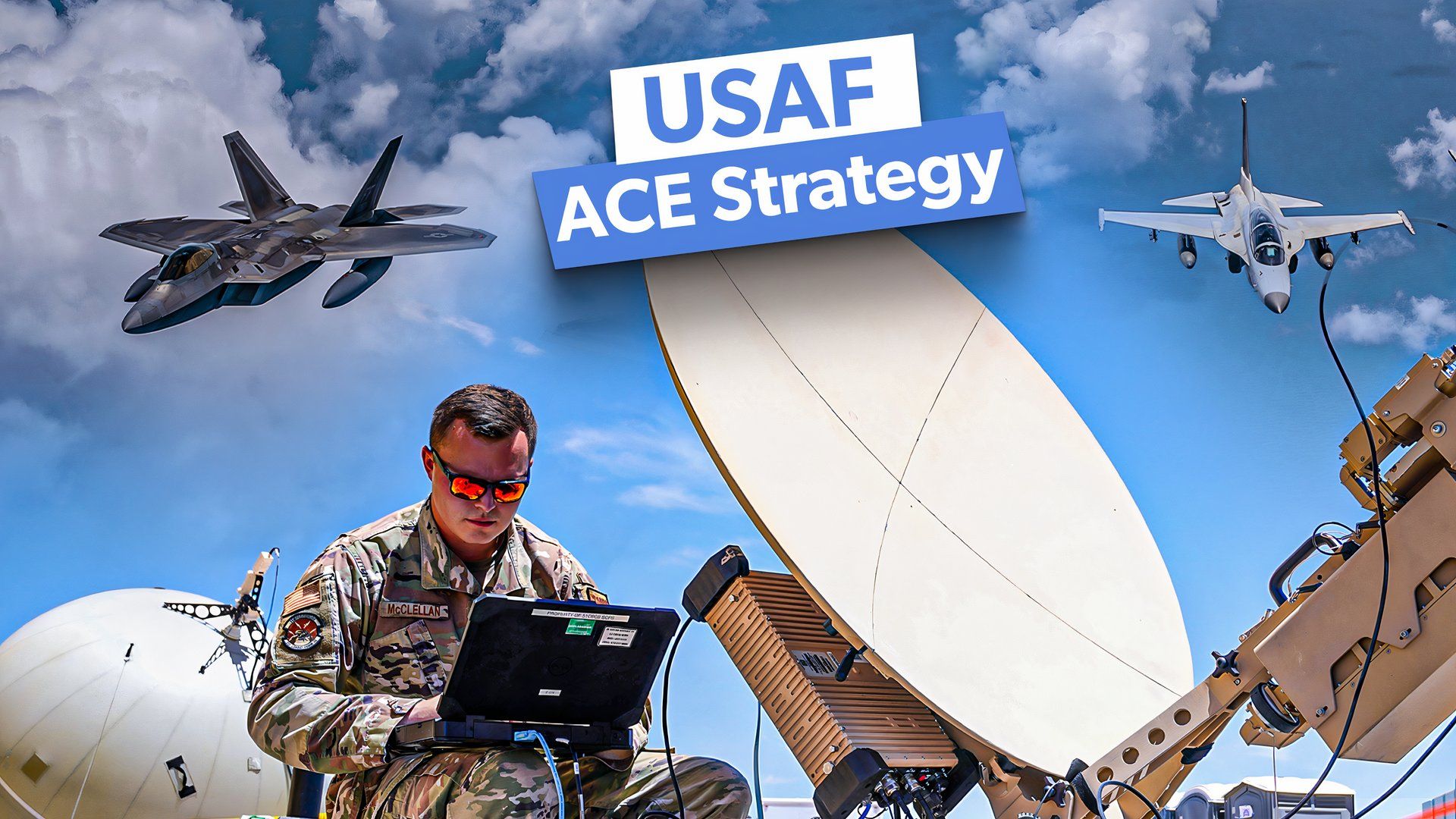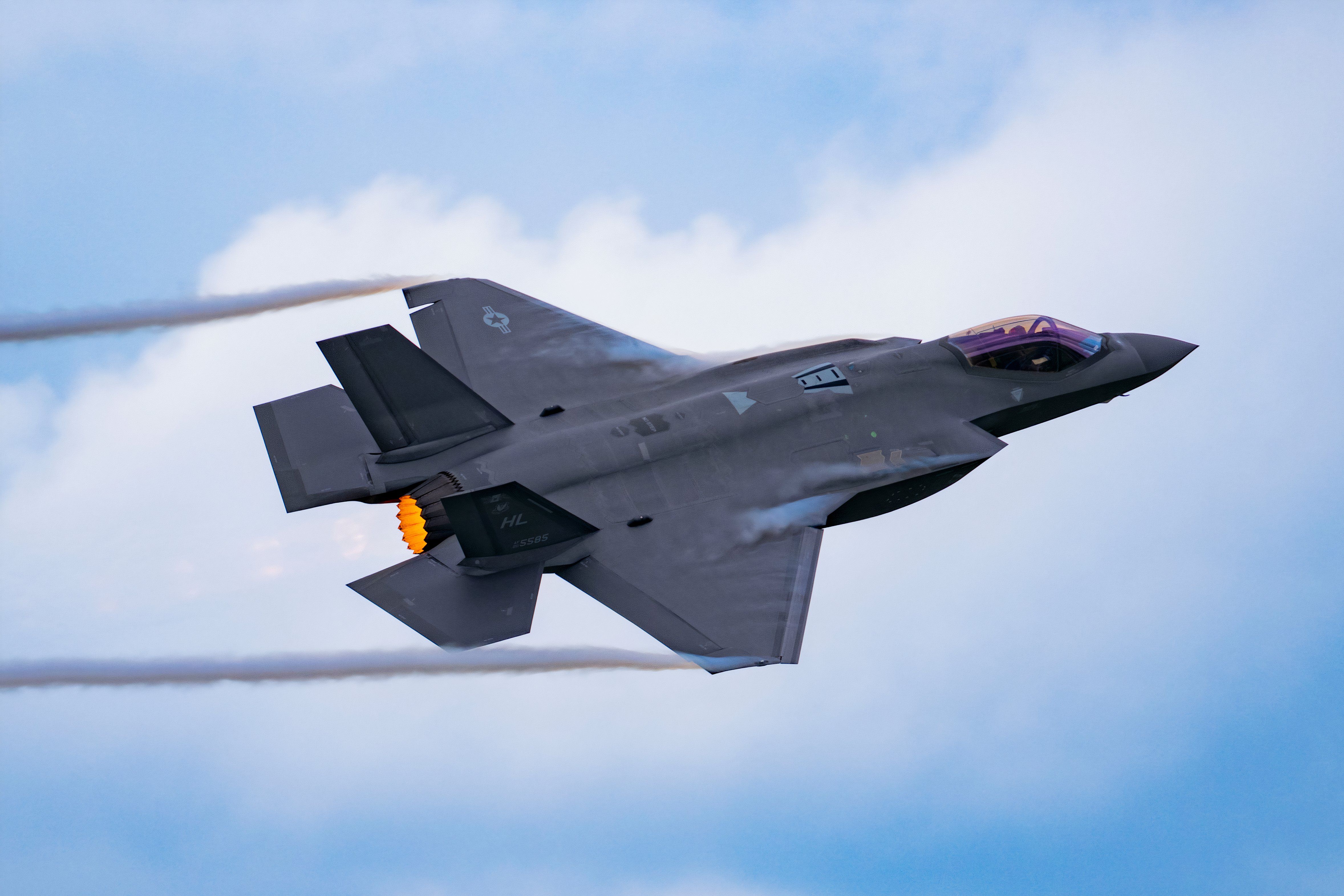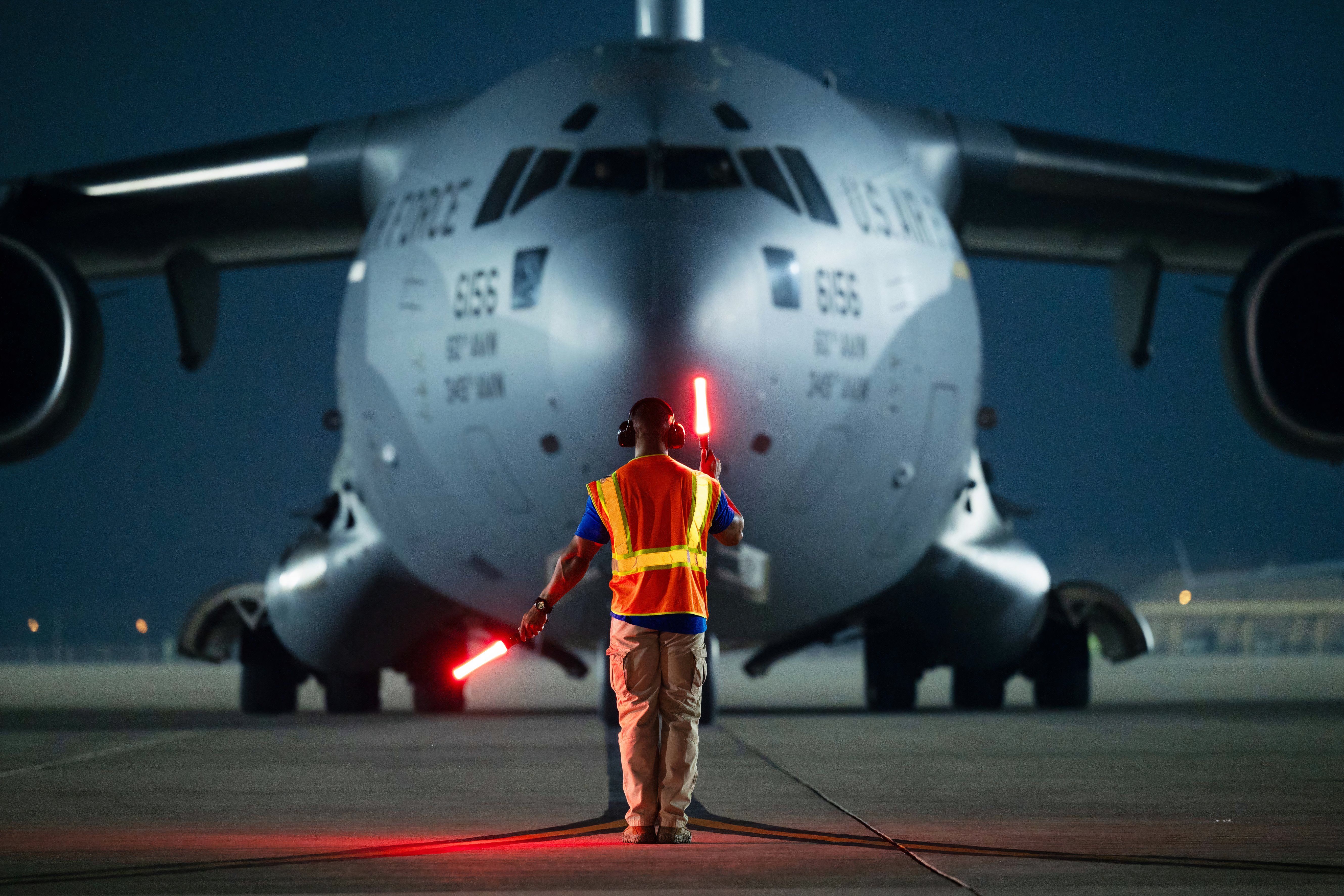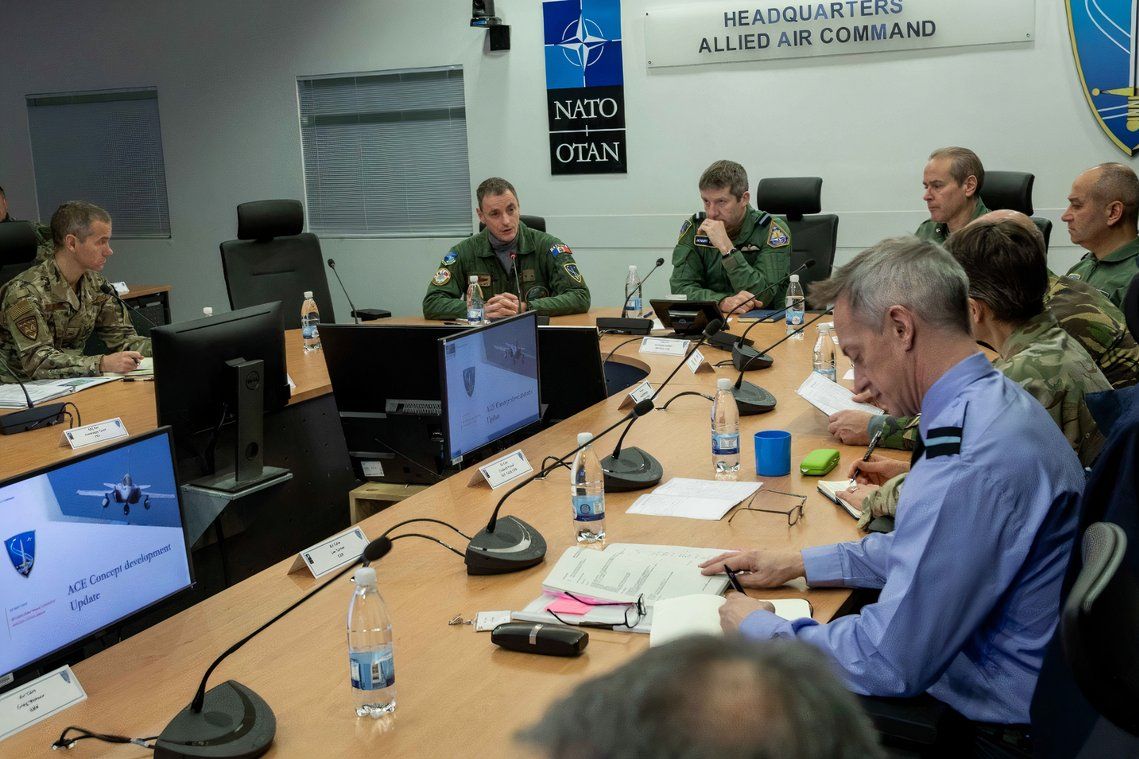Summary
- The USAF uses Agile Combat Employment to project global power; and faces challenges due to fewer bases.
- NATO countries adopt the ACE strategy for improved resilience and survivability in future conflicts.
- The ACE concept aims to complicate enemy planning, empower subordinates, and ensure air superiority.
Since its founding as a separate branch of the United States military in 1947, the
United States Air Force
(USAF) has aimed to project its combat power globally. Using what it calls “Agile Combat Employment,” the USAF has relied on bases at home and air bases overseas to conduct operations and achieve whatever is needed in the shortest amount of time.
During the Cold War with the Soviet Union, which started in 1947 and ended with the collapse of the Soviet Union on December 26, 1991, the United States Air Force had considerably more bases than it has today. The USAF has significantly reduced its overseas bases from a peak of 93 air bases during WWII.
Today, it operates 44 major air bases outside the United States in fifteen countries and overseas territories. Now, with fewer air bases, the USAF is sometimes challenged in its ability to project its military might.
The USAF has to work smarter
With a reduced global footprint, the USAF has to rely more on intelligence, surveillance, and reconnaissance to stay ahead of its adversaries. Likewise, new technologies and long-range missiles put European air bases at risk of attack by the enemy military.
Once considered as being sanctuaries for Air Force aircraft, new weapons systems and a lack of money to build new bases have forced the USAF to adopt an Agile Combat Employment (ACE) stance to address the shortcomings.
NATO member countries have also adopted ACE
Not only the USAF but also other North Atlantic Treaty Organization (NATO) member military forces have adopted the ACE strategy. The plan is to work harmoniously to improve the block’s resilience and survivability while generating air combat power from bases at home and abroad.
By correctly using a proactive and reactive operational scheme, the USAF and other NATO nations can complicate the enemy’s targeting ability while simultaneously creating political and operational dilemmas.
In future conflicts, the United States Air Force (USAF) could face an enemy capable of an extended reach that would challenge the USAF to address the threat.
Photo: USAF
To combat this, ACE dictates that large centralized locations be dispersed and that assets be deployed from a network of smaller locations. Doing this will complicate enemy planning and give NATO commanders more options for reacting to the situation.
Lessons learned from the Russian invasion of Ukraine
Since the Korean War (1950-1953), the USAF has achieved air superiority in every conflict it has participated in. However, in future disputes that could involve China and Russia, the ability to gain air superiority will fluctuate as every air domain will be contested.
Empowering subordinates to make decisions and take quick, decisive actions at their level will give the USAF and other NATO military a massive advantage in future conflicts.
As we have witnessed during Russia’s invasion of Ukraine, when it comes to making a decision, the Russian soldiers on the ground have to wait until what to do has been filtered down through the ranks. Unlike Russia, the Ukrainian military operates in small groups, allowing lower-ranking officers and NCOs to make split decisions that enable them to work more effectively.
Airmen need to understand the mission
After being told what the commanders want to achieve, Airmen need to thoroughly understand the area of operations and how their commanders envision winning the fight. To do this, they must:
- Understanding the situation of the enemy
- Know where friendly forces are located
- Air and Joint Forces objectives
- All logistical and sustainability priorities
- Overall risk management
Armed with a thorough understanding of their mission and objectives, they can conduct their mission even if they have lost communications and continue the mission as planned until they receive updated information.
Photo:USAF
By using the ACE concept, the NATO country Air Forces can appear larger than they are by overachieving five basic principles, which are:
- Agility: the ability to move and react quickly
- Interoperability: the ability to operate effectively with other NATO members by using standardized equipment and weapons systems
- Survivability: the ability to survive an enemy attack by protecting air bases
- Remaining operational: The ability to allow aircraft to take off, land, and refuel while conducting combat
- Operational readiness: The ability to respond to all enemy threats with little or no notice
NATO ACE symposium
In December 2023, NATO conducted its second symposium on Agile Combat Employment (ACE) at Ramstein Air Base in southwest Germany. The conference objective was to bring together NATO air force commanders to discuss lessons they had learned and to improve the way NATO air forces could improve their capability, readiness, and resilience by adopting the ACE strategy.
Photo: NATO
When speaking about Combat Employment (ACE) in a NATO statement, Space Force Brigadier General Gilles Juventin said:
“ACE is an operational scheme of a maneuver designed to improve resilience and survivability while generating air combat power from both home bases and geographically dispersed locations. “ACE can be conducted from Main or Deployed Operating Bases and Contingency Locations – this requires a flexible, well-prepared and coordinated approach by the deploying force and the receiving bases.
“In order to make ACE a natural reflex for our Air Forces, it is paramount we all have the same appreciation of what this means. Capitalizing on NATO’s technological and operational edge and on the best practices shared during the symposium, we are able to make this concept work. I am very confident that we can and will see this happen in the near future.”
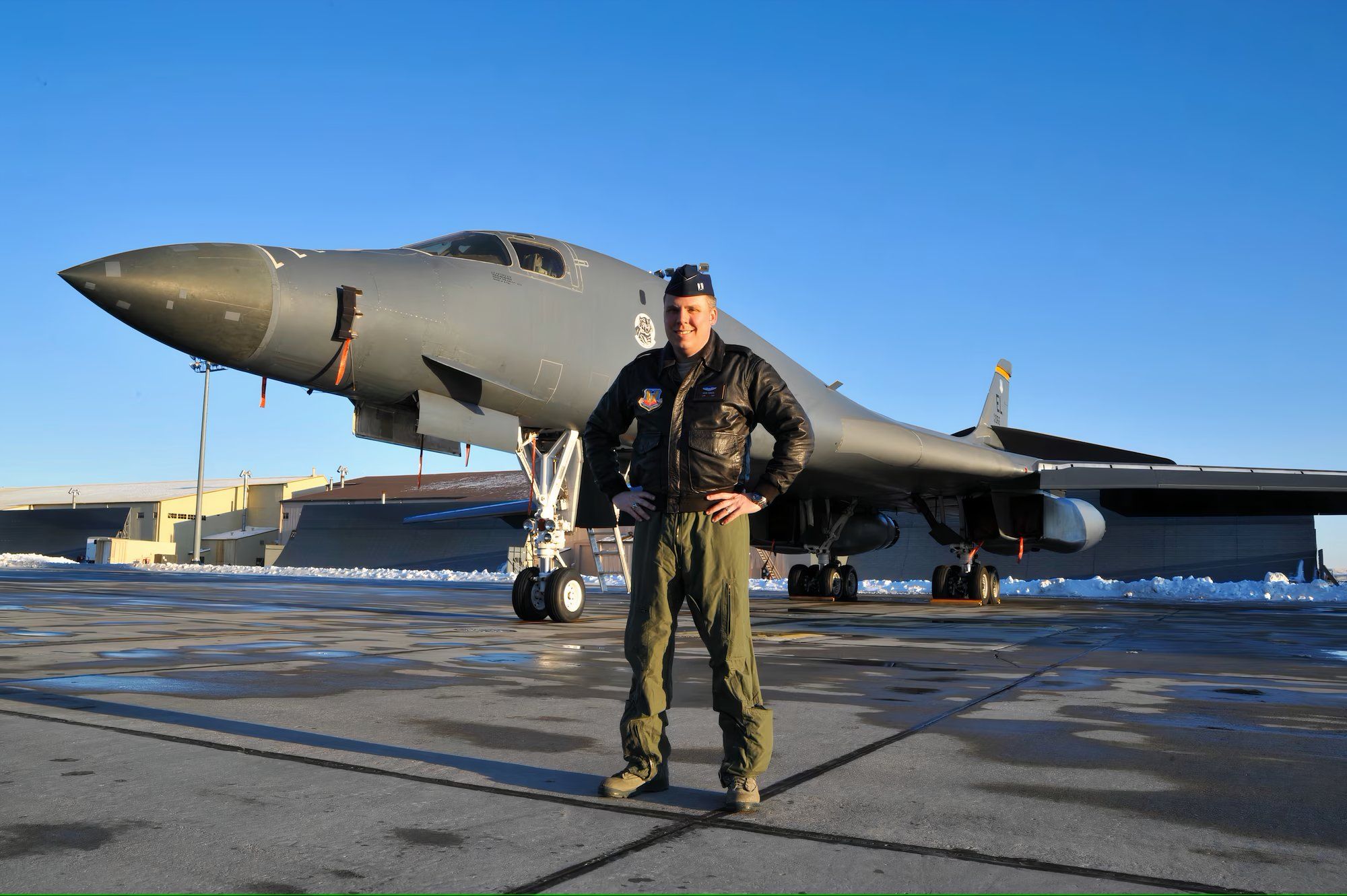
Related
Is The USAF Doing Enough About Its Shortage Of Pilots?
The USAF is facing a shortage of pilots, particularly fighter jet pilots. Tackling the pilot shortage to date has involved measures such as expanding training programs, retention bonuses, improved work-life balance, and flexible career paths. The Air Force also relies on Reserve and National Guard pilots to fill gaps, while broadening recruitment efforts to attract a more diverse pool, including women and minorities.
These measures, in my opinion, are commendable but insufficient. The root causes, such as the high cost and time of training, and overreliance on bonuses without addressing systemic issues like pilot burnout, remain largely unaddressed. The reliance on Reserve and Guard pilots is a stopgap, not a solution. Without more aggressive long-term strategies, such as fundamentally rethinking pilot training and career progression, the USAF risks continued shortfalls that could compromise its operational readiness and global capabilities.
Do you agree? Let us know in the comments!

